It’s a well-known fact that handmade rugs are stunning, last for many years and they are somewhat costly in contrast to machine-made oriental rugs.
Tags: oriental rug
Extra 15% off + Free PAD with code HOLIDAY15

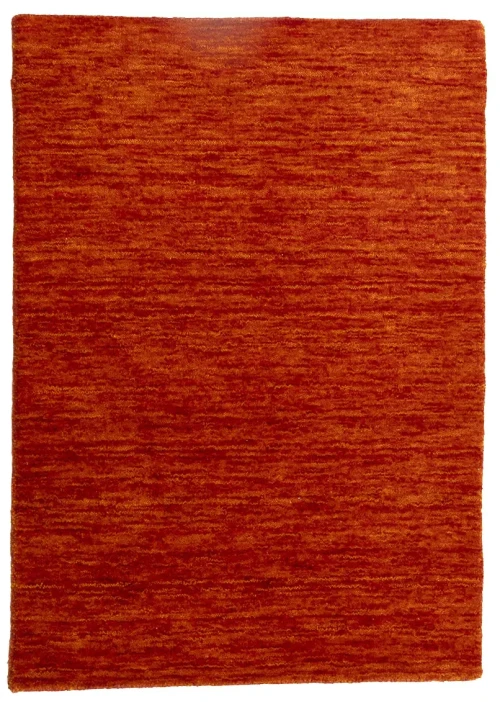
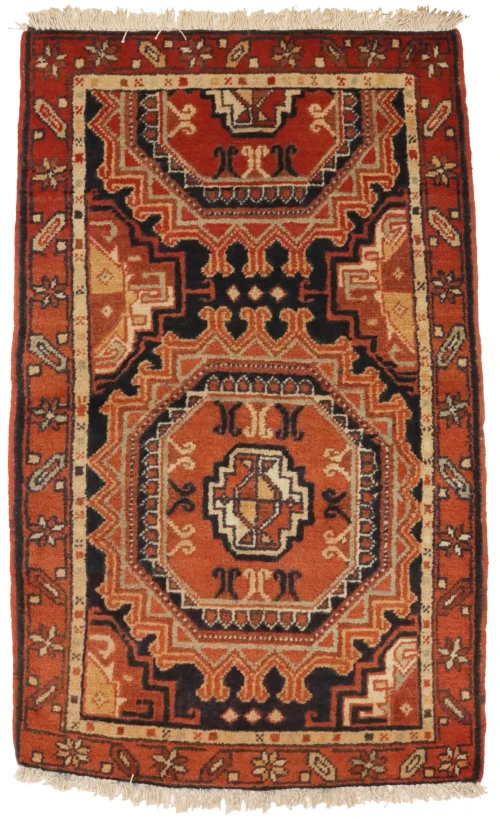
In the age of mass production, uniqueness has taken a back seat to convenience and profitability. It’s getting more difficult to find that personalized touch that’s only possible with a fine, handcrafted rug. However, difficult doesn’t mean impossible. We carry a variety of handmade rugs , and in this guide, we’ll offer a quick guide to help you determine whether a rug is handmade based on its style and material.
There are many characteristics that differentiate handmade rugs regardless of their origins. We’ll discuss those below. Here’s a quick look at what we’ll cover:
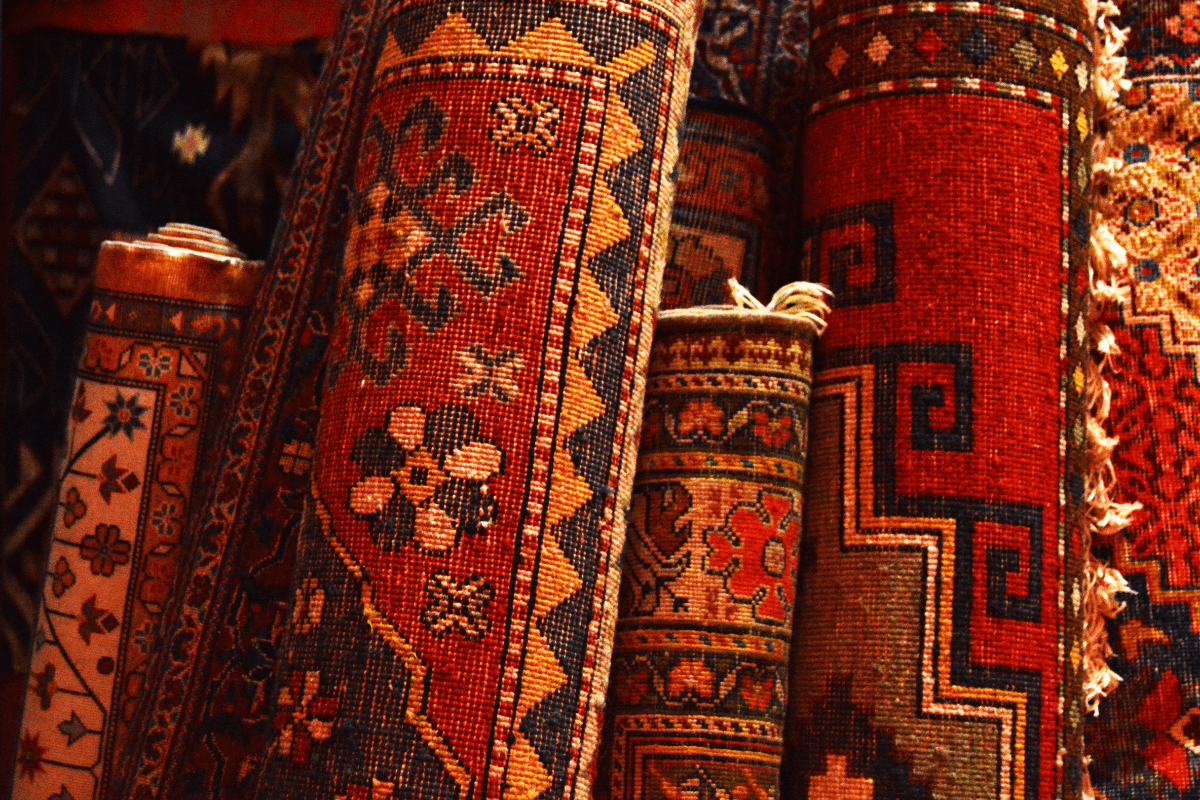
Prices on handmade rugs run a little higher. Why? Handcrafted rugs can’t be mass-produced as efficiently as those engineered by machines. Since they take longer and require actual hands-on work, they tend to cost more.
Of course, the knowledge that your rug has been stitched by hand with love is only the beginning of the value you’re getting for your money. Handmade rugs will always have variations (even if only slight ones) that will also differentiate them from those mass-produced with machines.
This adds a personal touch that literally cannot be found with any other rug. Handmade rugs are also crafted with greater care and frequently outperform machine-engineered rugs. They can be passed from one generation to the next and provide excellent long-term value.
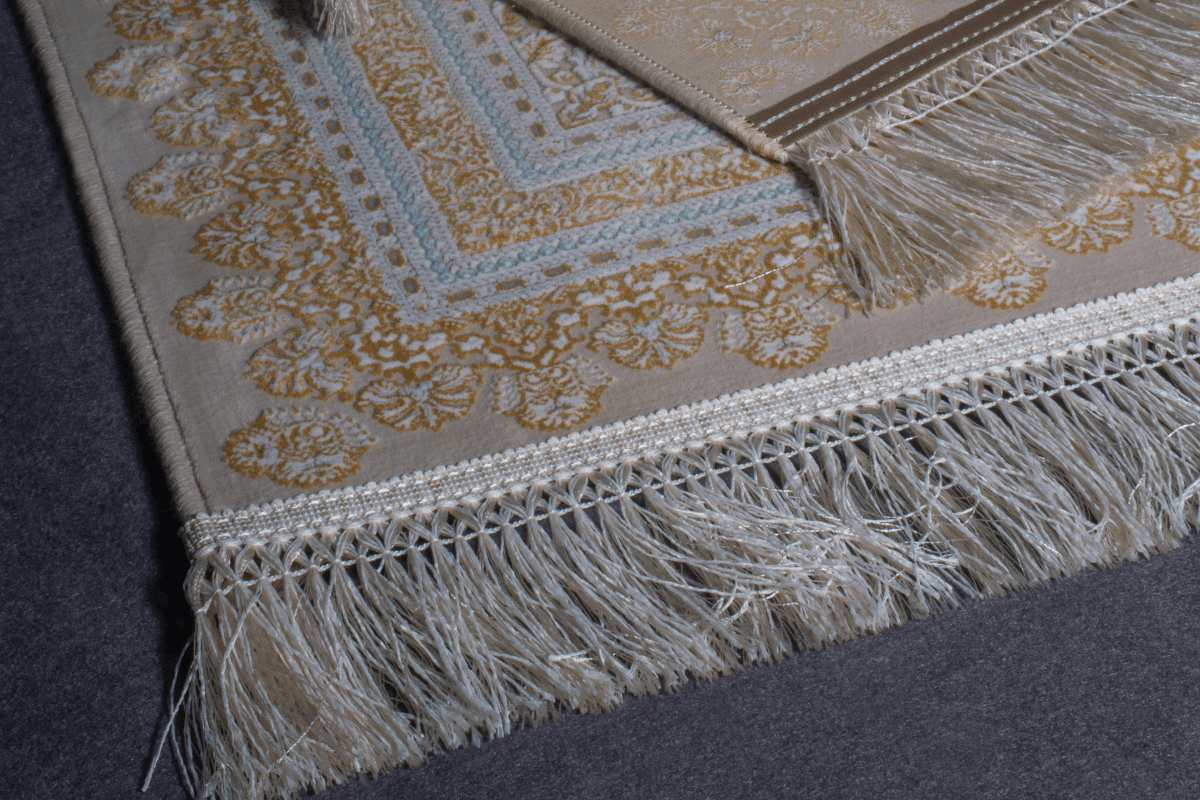
Fringes offer a strong clue as to whether or not a rug is handmade. These are the ends of the rug and are usually identified by tassels. Check them closely; if the fringe has been woven separately from the overall rug, it’s definitely machine-made.
This will be easy to tell, as the stitching will clearly fasten the fringe separately from the rug’s original construction. Another common practice is an even easier sign to notice: if the fringe was glued.
That’s probably the most obvious sign you could hope for that your rug is machine-made. Glued fringes can also be a red flag, although they’re not always bad.
If the fringe is woven as part of the overall rug, there’s a pretty good (but not definite) chance that it’s handmade.
Obviously, not all rugs have tassel fringes. And while all rugs technically have a fringe, some are considered “fringe-free” if the fringe is small and hardly noticeable. Some people prefer the more even design of a seared rug.
Rugs with fringes are generally regarded as being more traditional, whereas fringe-free rugs are viewed as more modern. So, if you’re looking for a fringe-free handmade rug, here are several other signs to consider.
Don’t worry, we’re not referring to the visible style or quality. Rather, the weaving (typically along the back or bottom, depending on how you see it), will have uneven seams and stitching. This is especially noticeable along the edges.
It’s easier for machines to work on smaller scales. In fact, they can often achieve microscopic precision. So, when weaving rugs, they can sew the most intricate seams.
Of course, this also means that each and every rug was designed from a template with no distinguishing attributes from the other rugs on the line. Still, if you prefer that greater level of precision, machine-made rugs might be your choice.
Rug artisans typically use natural materials when crafting rugs. They are easier to work with and tend to follow traditional rug-making techniques.
These materials include cotton, wool, and silk . These materials are also more sustainably sourced, thus making handmade rugs the more environmentally-friendly option.
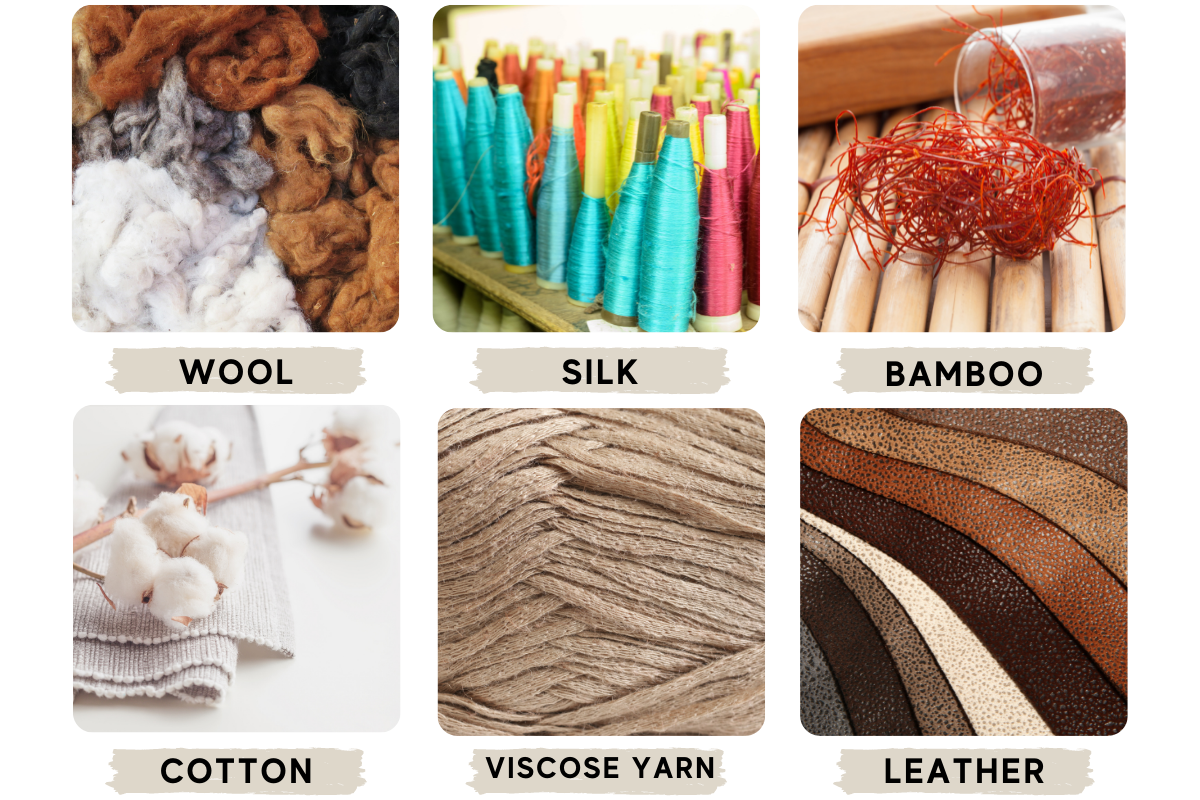
Machines can use these materials as well, but they often use synthetic fabric. Some of the most common are polyester, nylon, and faux versions of natural materials. If your rug is made from these materials, it’s almost guaranteed to be machine-made.
We also want to note that “authentic” oriental rugs are never made from synthetic materials. Rugs made from synthetic fibers might offer similar designs, but they will never be genuine.
Authentic oriental and Persian rugs are about more than just aesthetics. Each follows a tradition complete with their own subcultures that are many generations in the making (more on that later).
True aficionados often prefer the higher-end wool rugs for their decor. Since it’s a natural material, it’s also more likely to be handmade, although that certainly isn’t to say that all wool rugs are handmade.
Handmade wool rugs are used in a variety of styles, so check the preceding guidelines to see if your rug is handmade.
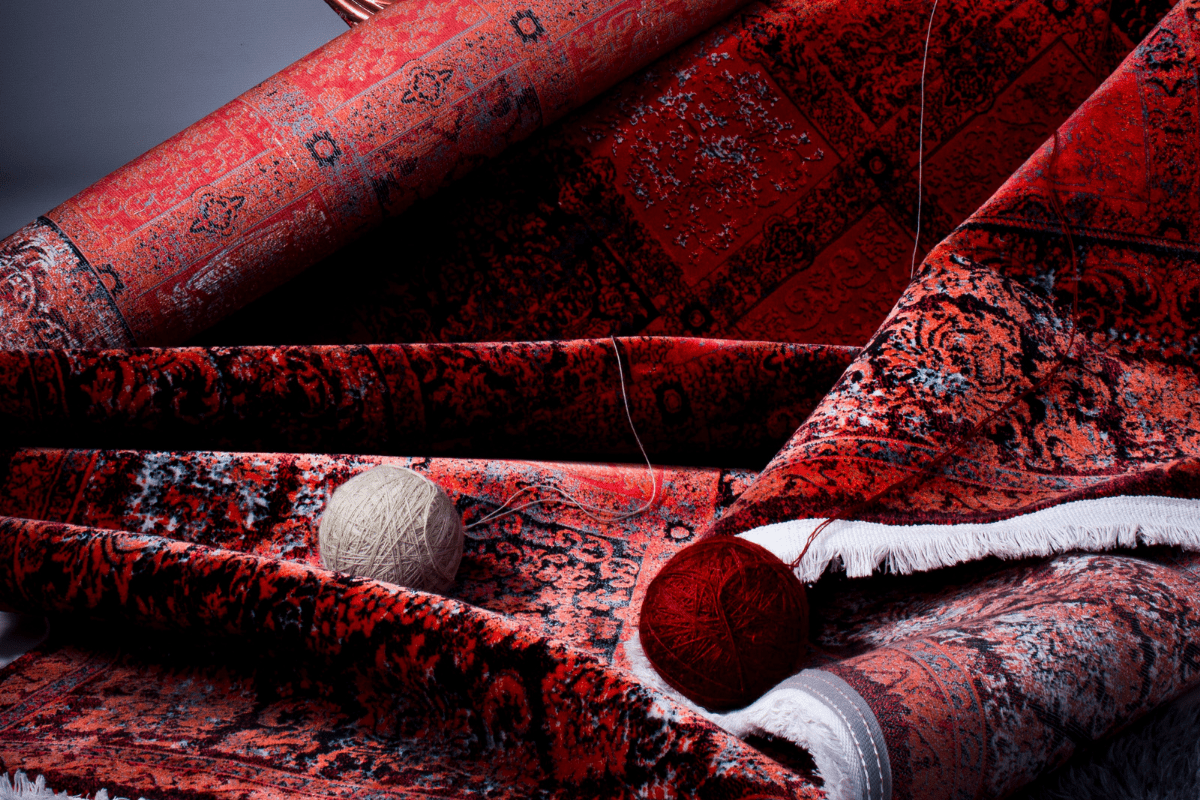
Chances are, you’re going to be rolling and unrolling your new rug at some point or another. This offers a quick way to tell if a rug might be handmade; if it is, it’ll feel more flexible. The back will also usually feel softer on handmade rugs. Of course, we don’t recommend attempting to bend your rug excessively or unnaturally to test its flexibility. Doing this will likely crease the design and could damage your rug’s construction.
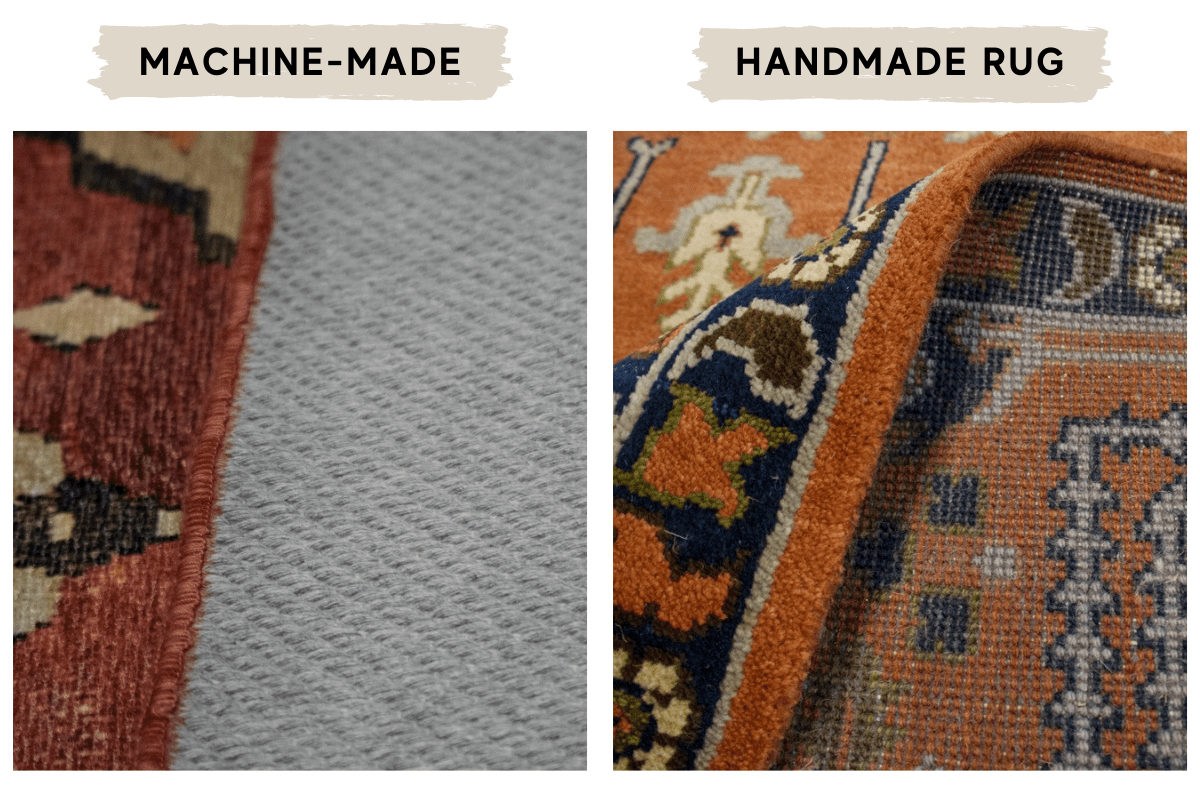
Machine-made rugs have a backing, often composed of linen or latex. While this is always an attribute of mass-produced rugs, backings may also be found on handmade rugs. This is especially true in the modern age as new design processes are discovered and embraced.
So if a rug does have a backing, that doesn’t necessarily mean that it’s machine-made. If it meets the rest of the criteria mentioned here, it’s probably still a handcrafted rug. But if it doesn’t have a backing, there’s a better chance that it’s handmade.
You’ve probably noticed that rugs seem to have a border outlining the edge. This is called the overcast and it’s a strong indicator of whether or not a rug is handmade. Overcast edges are a sign of a handmade rug; over-stitched edges generally characterize a machine-made rug.
It’s important to mention that in most cases, hand-woven overcasts must also be repaired by hand. It takes a skilled artisan to do it the right way. Keep an eye on your as this is typically the first place where signs of wear will appear.
Sometimes the rug pictured may have slight variations from the rug you receive. This is a great sign that your rug has been handcrafted.
Its unique variations offer a personal touch and truly set it apart as one of a kind. These variations kind of serve as the artisan’s signature as each rug (like each person) varies in its own way.
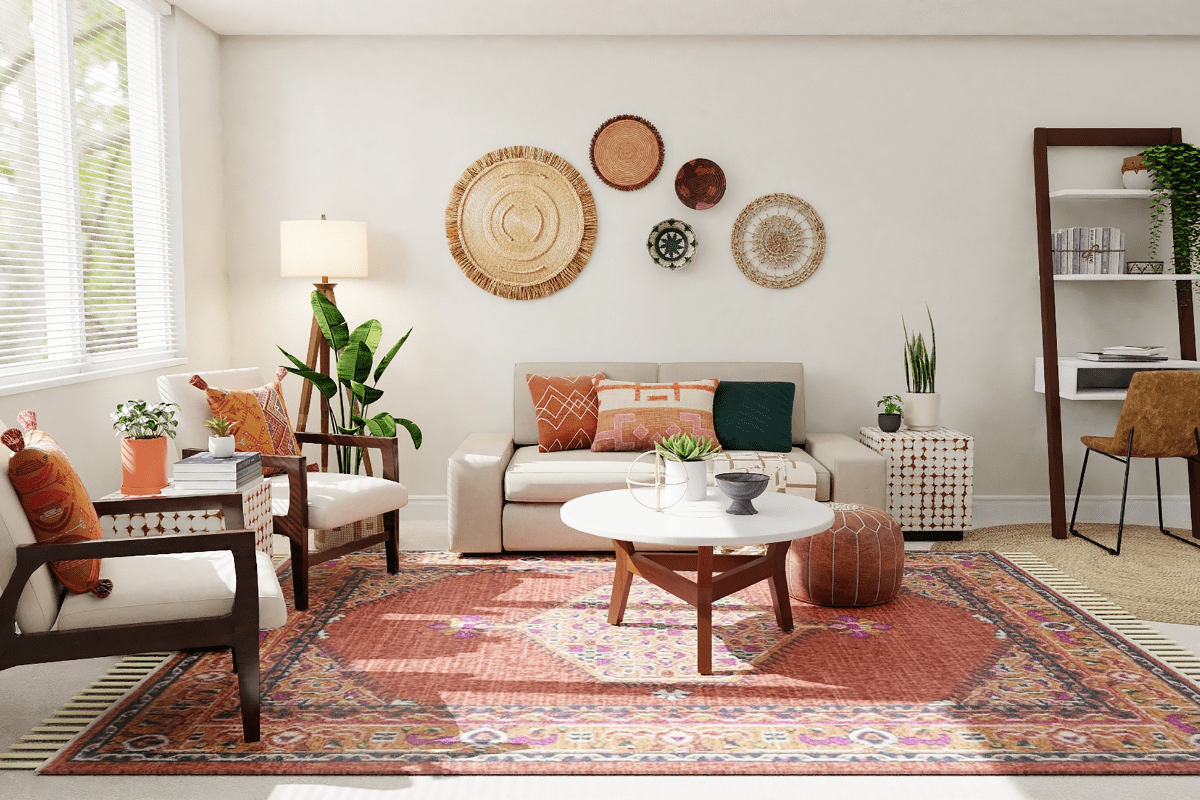
Machines are programmed to make one style of rug over and over again. Yes, factories can produce a variety of styles, but they largely follow marketing research conducted by big firms to see which designs sell the best.
Handmade rugs often reflect the artistic style of the artisan . Even in an entire warehouse of rug artisans, you’re likely to see a variety of designs that simply can’t be found anywhere else.
So, if the rug you’re considering offers a bold design unlike anything you’ve ever seen, there’s a good chance that it’s handmade.
Before the days of factories and machines, knots were a staple of rug design. Basically, these knots appear when yarns are wrapped around knot collars to stitch the fabric together. Working with such small quantities by hand is tricky; knots are inevitable with handmade rugs due to our physical limitations.
As we began using machines to weave rugs, those knots began to disappear. Why? As we mentioned earlier, machines can achieve microscopic precision. They can use incredibly fine needles to close warps and knot collars that are perfectly uniform.
Needless to say, knots are one of the easiest ways to tell whether a rug is handcrafted or made by machine. They are a staple of handmade rugs. Also, knots woven by hand are rarely completely uniform.
Some will be larger than others, and they may not always tie in exactly the same way. This is because measurements by hand simply aren’t as precise as they are with machines. It also shows that each artisan has its own unique style and approach.
Yes, machines can be programmed to imitate handmade features, but doing so often uses more yarn and takes longer, even if only slightly.
So, it’s typically a drain on their resources. Manufacturers also know that some consumers prefer machine-made rugs for their uniform designs. Thus, if a given rug contains these knots and the other features we’ve discussed, it’s likely handmade.
Rugs often have a knot density. This is a measure of the total number of knots built into the rug. With handmade rugs, more knots mean more intricate designs.
As expected, it also means rugs with higher knot densities take longer to build. However, they also offer smoother, more intricate designs. Thus, a higher knot density often correlates with a higher rug value.
Knot density is often measured in knots per square inch. Given how small these knots are, it’s not always easy to tell whether it’s higher or lower. It takes a trained eye, so a little expert input is helpful. Fortunately, we can help with that !
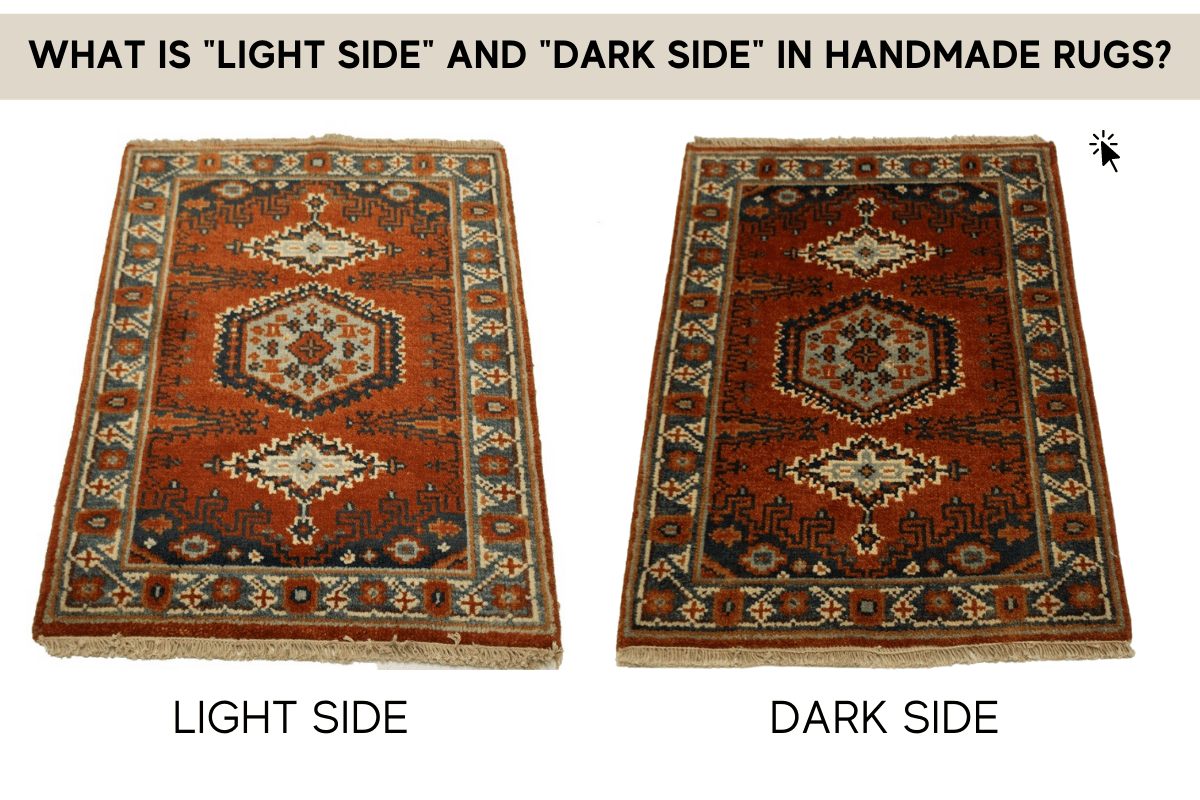 When artisans are crafting rugs by hand, they also use dyes to color them by hand as well. The materials are not always dyed together, and some variations (even slight) will likely occur in handmade rugs. Machine-made rugs will always appear uniform since materials are dyed together and applied evenly.
When artisans are crafting rugs by hand, they also use dyes to color them by hand as well. The materials are not always dyed together, and some variations (even slight) will likely occur in handmade rugs. Machine-made rugs will always appear uniform since materials are dyed together and applied evenly.
Of course, some artisans are especially skilled at their craft, so color variations may not always be noticeable. That’s why this is just one sign to look for, just like every other sign that we’ve listed here. Learn more about color shades in handmade rugs right here !
There’s one other sign of a handmade rug, but it’s one that you won’t see for a while. Despite the many innovations of mass-producing factories, the durability of handmade rugs consistently outperforms their counterparts. This is another reason for the higher cost: handmade rugs offer more value since they last longer. Manufacturers, aficionados, and retailers confirm this.
Handmade rugs are usually easier and more affordable to repair. As we mentioned, they should also be repaired by hand. But if signs of wear are caught early, repairing is a breeze for a skilled artisan and a relatively quick process.
From traditional to contemporary, interior design takes many forms. So, it makes sense that handmade rugs will come in a variety of styles as well.
Of course, they’re also used in different ways. Here, we’ll briefly cover some of the most common styles and the traditions that brought them apart. We’ll also cover a few more ways to differentiate them from their machine-made counterparts.
Handmade oriental rugs follow a tradition that is hundreds, even thousands, of years old. They carry a legacy that has prevailed throughout history’s most tumultuous periods.
They have captivated royalty, aficionados, and local homeowners alike. That’s also why the term can now denote rugs made in other regions of the world.
By looking for these attributes in your next oriental rug, you can help keep this legacy alive. Mainly, oriental rugs are differentiated by small loops that somewhat resemble squares. You can also check the warp for pairs of bumps. This sets the rug apart as both oriental and handmade.
Handmade Persian rugs rival the legacy and popularity of the oriental. It offers important distinctions, especially when hand-sewn by genuine Persian artisans.
Mainly, handmade Persian rugs have knots that are symmetrical around the collar. They fit uniformly around every other warp in a single strand.
Rug artisans use a variety of techniques and (as we discussed earlier) materials when crafting rugs by hand. Here, we’ll discuss what that looks like and how they offer more clues about whether or not a rug is handmade.
Tufted rugs follow a similar construction to some types of carpets. They feature a loop pile construction by using a hand drill to insert the pile into the base. Sometimes, the pile is cut, resulting in a cut pile construction.
It’s important to note that “tufted” rugs are not the same as “knotted” rugs. So, if you’re considering a handmade tufted rug , you won’t look for knots. They’re not part of the tufted construction.
Tufted rugs are woven over a canvas foundation. Technically, the process is supported partially by a machine (a tufting gun), but the designs and gunning are all coordinated by hand.
Once the pile has been tufted, it’s glued in place. While they’re more of a hybrid between handmade and machine-made rugs, they are also faster to make and often cost less than handmade oriental rugs.
Jufti knots are another way to produce handmade rugs faster. These knots are only wrapped around warp pairs. They are never wrapped around a single warp. This reduces pile density which reduces production time.
Typically, the knot will wrap tightly around one warp and stretch to the other. Think of it as one end of a scarf wrapped around a person’s neck and the other end stretched over their arm.
Handmade Spanish rugs also feature unique knots; are symmetrical. The knots are woven around every loop in a painstaking process that is often believed to enhance both style and durability. These knots tie around themselves and kind of resemble an upside-down pretzel.
Whether you prefer a style that’s traditional , exotic, or contemporary , area rugs come in a variety of designs and take many forms. Of course, none of them will offer the same personalized touch as a handmade area rug.
Area rugs come in many shapes and sizes, but the signs of whether it’s a handmade area rug or not largely follow the same guidelines.
We’ve covered several attributes to look for in handmade rugs. This includes checking the construction, fringes, and materials, among other things . It’s worth mentioning that occasionally, one or more of these attributes may also be found in mass-produced rugs.
However, if you’re considering one that has most or all of these signs, chances are, you’re buying a rug that’s been crafted by hand and one that’s uniquely different from any other in the world.
Some retailers focus exclusively on machine-made rugs, while others specialize in handmade rugs. And some (like us) offer both! If you’re ready to buy a new handmade rug today, stop by our store! We offer handmade rugs in a variety of styles and sizes. We also carry machine-made rugs if you prefer a more uniform look.
Even better, we can show you in person exactly what signs to look for when considering a handmade rug. We can also help choose the best rug for your home’s unique style .
If you prefer a no-contact purchase, you can buy a variety of handmade rugs from our website . This is perfect for having your rug delivered directly to your doorstep or even just to get an idea of what we have in stock. Our website is secure and includes room scenes for select rugs that we sell online.
Every rug is accompanied by a variety of pictures, so you can easily put your newly gained skills to the test. Still, if you’re unsure about whether a rug is handmade , give us a call or send us an email! We ship nationwide and offer rug styles that you won’t find anywhere else.